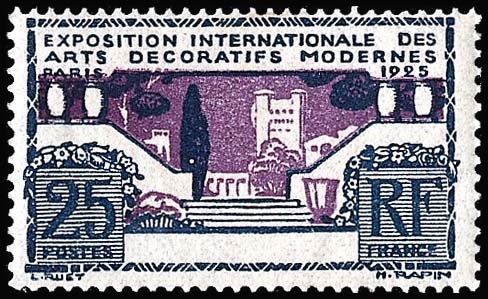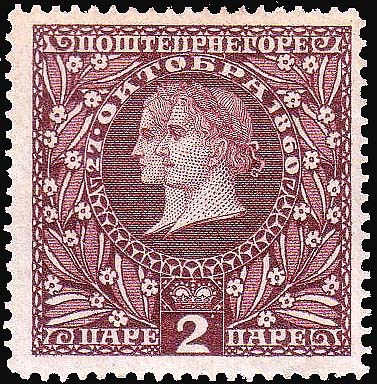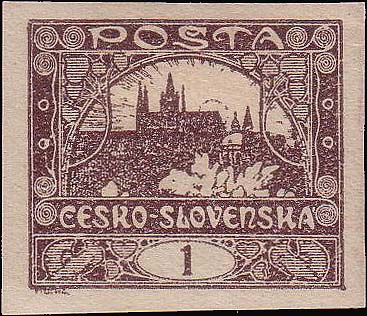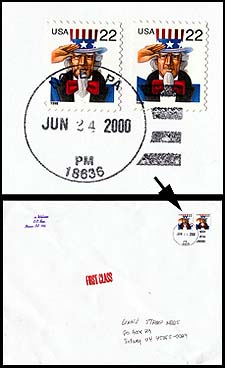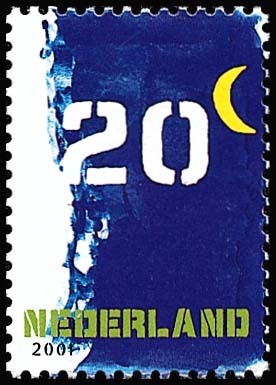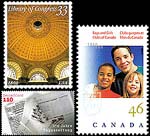POSTAL UPDATES
insights
Stylish postage stamp designs trace developments in world of art
By Janet Klug
Postage stamps pack a lot of wallop for their size.
Not only do they carry letters and packages anywhere in the world, they also reflect the place from which they came.
Stamps depict world leaders, history, culture and social issues. Stamps also graphically illustrate trends in art.
It is interesting to go through your stamp albums and look for various artistic styles that were fashionable when the stamps were issued.
The designs of stamps issued from 1840 to about 1900 include heavy ornamentation, an inspiration of the 17th-century baroque style. The heavy, intensely curved figures and ornamentation were the fashion during the Victorian age.
An example is the Costa Rican ½-reale blue Coat of Arms stamp (Scott 1) issued in 1863, shown in Figure 1. The ornate frame of the stamp design competes with and nearly overpowers the vignette.
The 1890 Hawaiian 2¢ dull violet Queen Liliuokalani stamp (Scott 52) shown in Figure 2 also has a frame laden with baroque curlicues, but by the 1890s artistic styles were beginning to change.
By about 1890 a new artistic style was making an appearance in Europe. This style was called "art nouveau" in Britain, France and Belgium. In Spain is was "art joven," and in Germany it was "Jugendstil."
Art nouveau is characterized by long, fluid, sensuous, almost feminine lines and ornamentation taken from nature (leaves, flowers, vines, buds). Art nouveau inspired furniture makers, glass artisans such as Louis Comfort Tiffany, architects and designers of stamps.
The Austrian 4-heller green Mercury newspaper stamp (Scott P20) shown in Figure 3 was issued in 1916. Its design has all of the characteristics of art nouveau.
The head of Mercury is surrounded with a winding vine of leaves and tendrils. Even the outer frame twists and turns in an organic way.
One of the most famous art nouveau artists is Alfonse Mucha, who designed Czechoslovakia's first stamps. They are known as the Hradcany issues because the central design shows Hradcany castle in Prague.
Mucha designed the Czechoslovakian 1-haleru dark brown Hradcany Castle stamp (Scott 23) shown in Figure 4. The stamp was issued in 1919.
Look closely at the stamp design and you will see those sinuous curves in the form of branches flanking the vignette and in the frame on both sides.
Even the lettering is in the flowing art nouveau style, a style that made a brief comeback in the 1960s hippie era.
Art nouveau had only a short period of popularity.
By about 1900, some of the artists were moving towards simpler, cleaner, quieter designs inspired by the arts and crafts movement.
Arts and crafts adopted some of the organic qualities from art nouveau, but it simplified them.
Many works show a linear, Gothic influence or a minimalist Japanese style.
Frank Lloyd Wright's earlier works in architecture, furniture and graphics are considered to be in the arts and crafts style, and he was a major influence.
The Montenegrin 2-para purple-brown King Nicholas and Queen Milena stamp (Scott 88) shown in Figure 5 was issued in 1910. It evinces elements of both art nouveau and the arts and crafts style. There are some curving lines, but they are simpler and slightly more geometric and formal.
That affection for geometric design slowly gave way to the next new style, art deco.
The arts and crafts movement was a reaction against machine-made goods and a return to good craftsmanship made by hand with great care. In contrast, art deco embraced the machine age, and its designs look almost industrial.
Art deco characterized the 1920s and 1930s. Its modernist, streamlined, angular designs stand in marked contrast to art nouveau's flowing organic lines. There is a sophisticated, masculine look to art deco.
Art deco got its name from the Arts Decoratifs Modernes Exposition held in Paris in 1925.
The French 25-centime gray-blue and violet Terrace of Chateau stamp (Scott 224) shown in Figure 6 was issued in 1925 for the exposition.
The stamp features a modern art deco design. Notice how different the artistic style of this stamp is from those shown in Figures 1 through 5.
The Romanian 1-leu red-brown Head of Aviator postal tax stamp (Scott RA20) shown in Figure 7 is another example of art deco design. This stamp and two others in the same set also exist imperforate.
A familiar art deco masterpiece is the Chrysler Building in New York City, depicted on the United States 32¢ stamp shown in Figure 8 (Scott 3184j).
The stamp is part of the Celebrate the Century 1920s pane of 15 issued in 1998.
One of the U.S. 39¢ Modern American Architecture stamps issued in 2005 also pictures the Chrysler Building (Scott 3910b).
The Hungarian 1-pengo Flight Holding Propeller airmail stamp (Scott C32), shown in Figure 9, features one of the most striking art deco stamp designs of all time. The allegorical design depicts flight as a winged man.
Some countries really have kept pace with artistic trends in their postage stamp designs.
France certainly did, which makes sense because many of the artistic movements of the 19th and 20th centuries began there.
Stamps of Netherlands made a natural progression from the neobaroque of the Victorian era to the flowing art nouveau style, then a short foray into the arts and crafts influence, followed by unmistakable art deco designs.
Even today, Netherlands issues stamps with cutting-edge designs that often defy description.
The designs can be difficult to identify from catalog descriptions, but they are always interesting to see.
For example, the design of the Dutch 0.20-euro stamp (Scott 1064) shown in Figure 10 seems to have defied the descriptive abilities of the editors of the Scott Standard Postage Stamp Catalogue. The stamp is pictured in the catalog with no written description.
It pictures an abstract image of a night sky and a crescent moon. The moon serves as a cent sign.
Tracing artistic styles through postage stamp designs gives a collector a better appreciation for how stamp designs went from ornate, heavily ornamented stamps to the clean, uncluttered look of today's issues.
Pick out your favorite stamp and then figure out what style it is. Sometimes looking at the style of the stamp will help you find more quickly its listing in a catalog.
For example, if the design of a stamp is art nouveau, then the odds are pretty good that the stamp was issued from the 1890s to about 1910.
MORE RELATED ARTICLES
Headlines
-
US Stamps
Oct 9, 2024, 3 PMProspectus available for Pipex 2025
-
US Stamps
Oct 9, 2024, 2 PMGratitude for Denise McCarty’s 43-year career with Linn’s
-
US Stamps
Oct 9, 2024, 12 PMWorld’s first butterfly topical stamp in strong demand
-
World Stamps
Oct 8, 2024, 3 PMRoyal Mail’s Oct. 1 definitive meets new international standard rate


